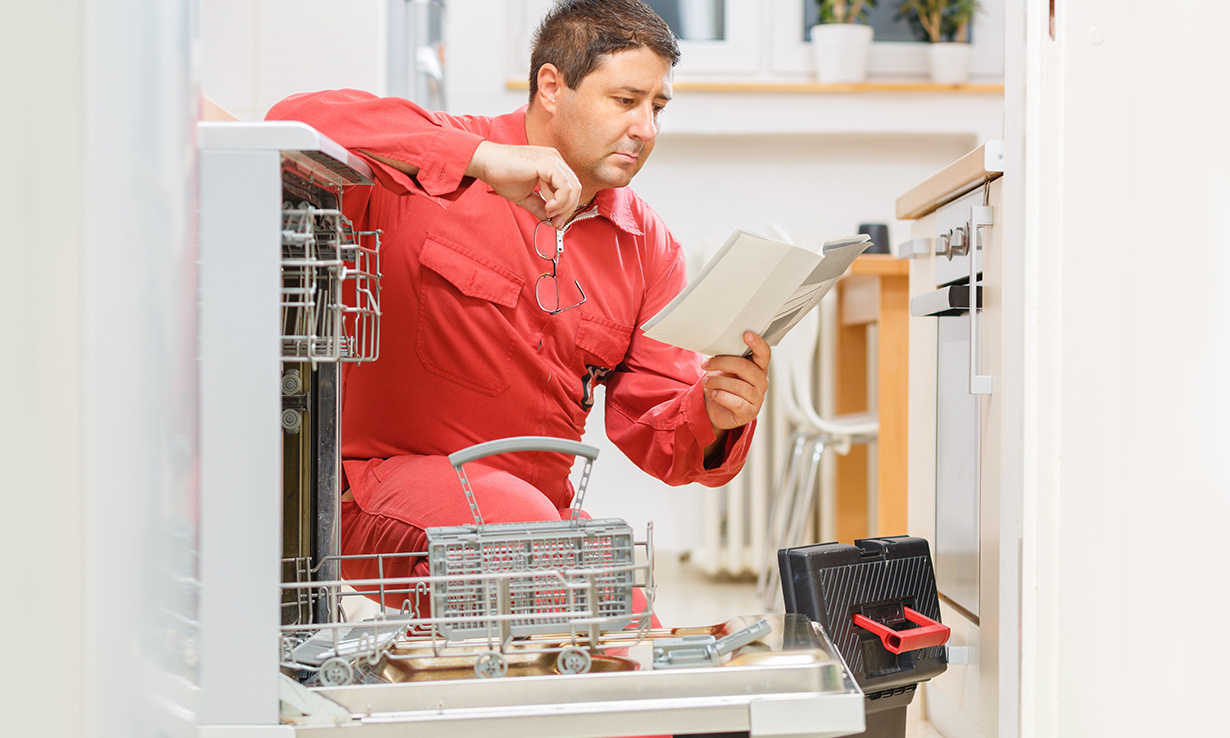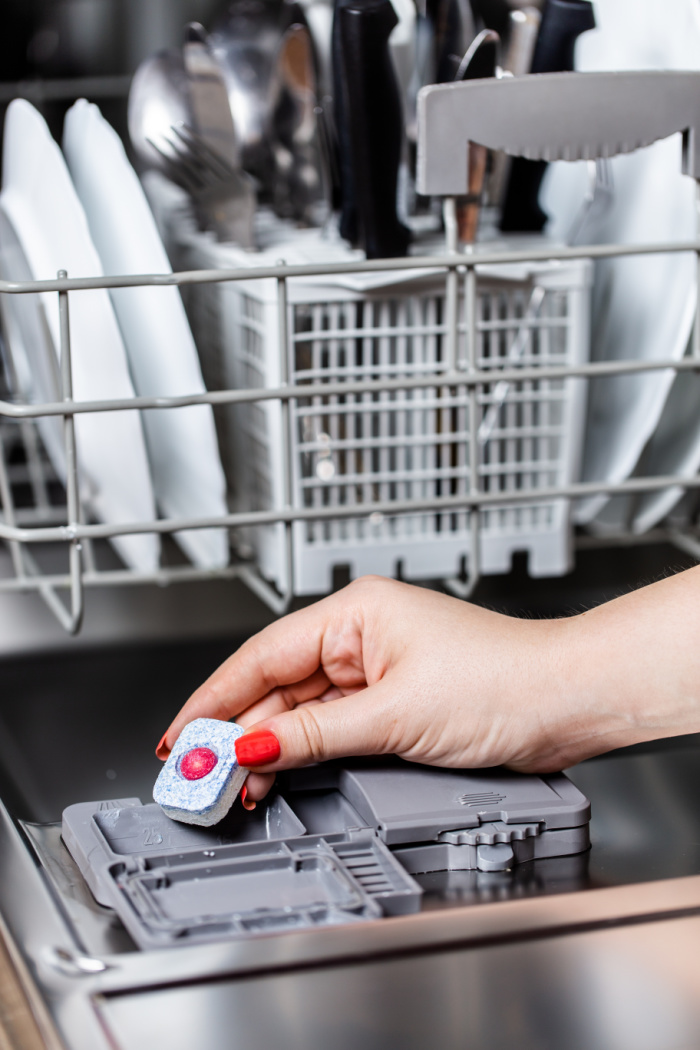Here down the page you will find lots of reliable help and advice related to How to Troubleshoot & Repair a Dishwasher.

Having your dishwashing machine break down or malfunction can be a big deal and trigger some discomfort in the house. Dishwashing machines are devices that we make use of to clean dishes as well as cutleries automatically to save us the stress and anxiety of by hand doing it.
Like every other machine that eases human initiative, dishwashing machines can break down and also develop some mistake at some point in time. There are numerous mistakes your dishwasher might develop, as well as while some of them can be fixed by replacing some components or repairing them, various other much more serious flaws will need that you get a brand-new dish washer.
This short article will identify a few usual faults your dishwasher can create to hinder its total efficiency and just how these mistakes can be addressed.
Usual Faults
Typical dishwashing machine faults could range from small to major ones. Relying on the degree, you will either need the services of expert plumbing professionals to repair or replace it.
Some of the most usual faults include:
Leaky Dish washer
This is probably one of the most daily dishwashing machine trouble, and also the good news is that it is easy to recognize. Leaks take place as a result of numerous reasons, and the leakages can ruin your cooking area. Common sources of dish washer leakages consist of;
If your meals and also flatwares come out of the dishwasher and still look dirty or dirty, your spray arms may be a problem. Oftentimes, the spray arms can get obstructed, and it will call for a fast clean or a substitute to work efficiently once again.
Lack of ability to Drain pipes
In some cases you may see a huge quantity of water left in your tub after a wash. That is possibly a drain problem. You can either examine the drainpipe hose for damages or clogs. When unsure, contact a professional to have it inspected and dealt with.
This is an additional usual dish washer trouble, and also it is primarily brought on by food debris or grease sticking around in the equipment. In this case, search for these fragments, take them out and also do the meals without any dishes inside the machine. Laundry the filter extensively. That will assist eliminate the negative smell. Guarantee that you eliminate every food particle from your dishes prior to moving it to the equipment in the future.
Verdict
A few of these typical dish washer mistakes can be fixed easily in the house, however in many cases, the mistakes could be huge and also might need the interest of professionals. If you live in Rochester, Syracuse, and various other parts of America, let the specialists appropriately diagnose what could be incorrect with your dishwasher and extend a remedy.
We likewise mount dish washers if you simply purchased a new one or intend to replace your own. With our years of experience in the industry, we are sure to give you the very best possible solutions.
8 Most Common Dishwasher Problems & How to Fix Them
My Dishwasher Isn't Draining
If your dishwasher isn't draining properly, you may be having an issue with your dishwasher's drainage system. This can be caused by a variety of issues:
Clogged drain: The dishwasher's drain may be clogged with food particles or other debris. Malfunctioning pump: The dishwasher's pump is responsible for moving water through the system and out of the drain. If it's damaged or not working correctly, it could cause a drainage failure. Broken or clogged hose: The dishwasher's drain hose may be broken or clogged, causing water to back up in the system. How to Fix Dishwasher Not Draining
Check the drain for any blockages. A clogged or kinked hose will prevent water from properly draining out of the dishwasher. Use a plunger or a pipe snake to clear any debris that may be blocking the drain. Check the dishwasher's pump for damage or malfunction. Consult the manufacturer's manual or call a professional appliance repair service if you think the pump may be the issue. Check the drain hose for any damage or blockages. The hose should be straight and free of any debris or kinks. Check the drain pump filters for any blockages if the hose is clear, but the dishwasher is still not draining. Some dishwashers have filters that can become clogged with food particles or debris. Cleaning or replacing the filters may help resolve the issue. Run a dishwasher cycle to make sure the water is properly draining out. My Dishwasher Is Leaking
A leaking dishwasher can be frustrating. There are a few possible causes that you can investigate to try and diagnose the issue:
Inspect the dishwasher for any visible signs of damage or wear and tear. Look for cracks or holes in the door and around the rubber seal. Check the hoses and pipes connected to the dishwasher for any signs of leaking. If there is no visible damage, you may hear the sound of water dripping or the sound of the water pump running. This might mean a problem with the water inlet valve or the drain pump. You may also notice a puddle of water on the floor near the dishwasher. This could indicate a blocked drain hose or a faulty drain pump. Finally, check the seals around the door and the door for any signs of damage, wear and tear, or improper installation. If any of these issues are present, they must be fixed immediately to avoid further water damage. How to Fix a Leaky Dishwasher
Identify where the leak is coming from. The most common places for a dishwasher to leak include the door, hoses, and pump. If the leak is coming from the door, the gasket or seal may need to be replaced. If the leak is from the hose or pump, the damaged parts should be replaced with new ones. Finally, check all the connections and make sure they are secure and not leaking How to Fix a Dishwasher That Won't Start
The perfect remedy for a dishwasher that won't start is confirming all the components are in perfect working order and that the wiring is in good condition. Next, inspect the motor and replace it if necessary.
If these steps do not resolve the problem, contact a professional appliance repair technician to diagnose and fix the issue.
Conclusion
Most dishwashers are reliable appliances with a long lifespan. As with all devices, checking your dishwasher regularly will help you quickly identify any issues and ensure that it is running efficiently.
And if you're in the market for a new dishwasher, don't let dishwasher problems ruin your day. Upgrade to a reliable, efficient model today! Check out our full selection of top-quality dishwashers that includes a range of styles and features to suit any budget and household needs.
https://www.coastappliances.ca/blogs/learn/common-dishwasher-problems

I was introduced to that editorial on The Most Common Dishwasher Problems from a friend on our other domain. Kindly take a moment to share this content if you liked it. Thanks for your time. Come back soon.
Book Services